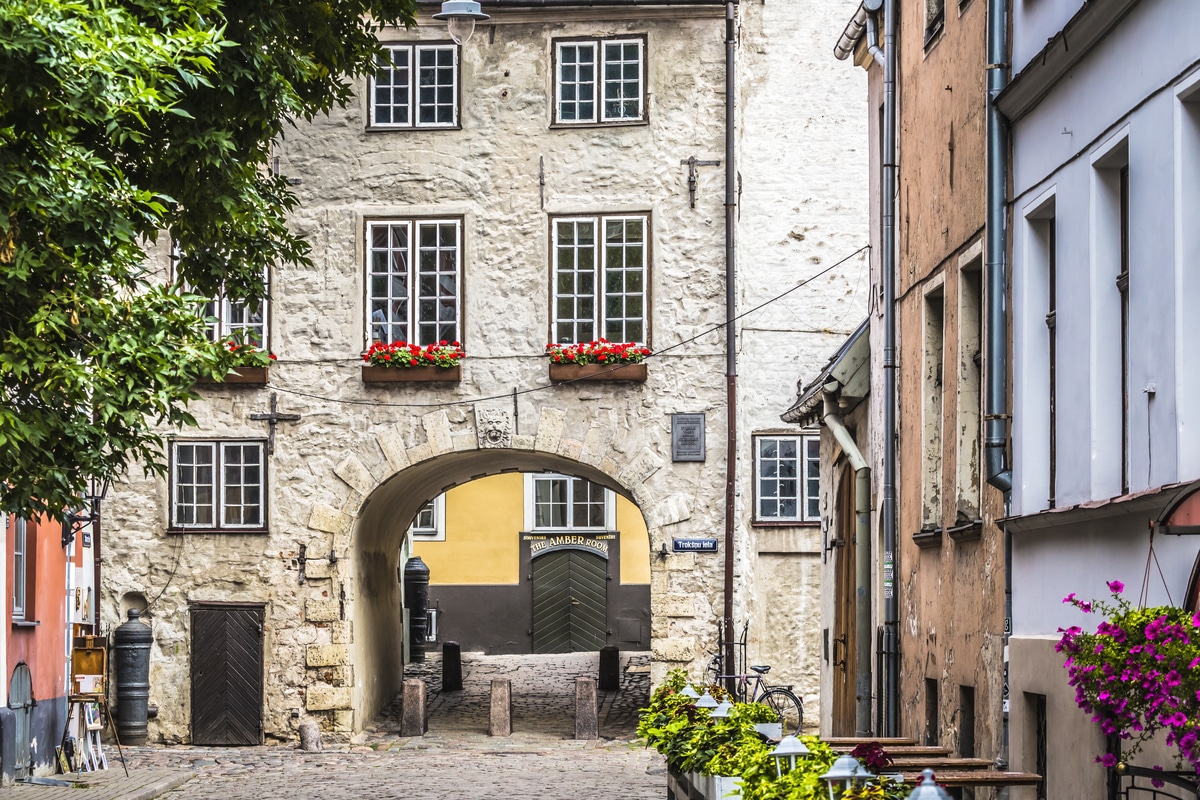Swedish Gate in Riga
The Swedish Gate (Latvian: Zviedru vérti) is a popular tourist attraction in Riga. Built after the end of the Polish-Swedish War in 1698, the Swedish Gate served as a city gate for a long time and was part of Riga's city walls. Apart from the Swedish Gate, there were seven other city gates, but they no longer exist.

The clever idea of a merchant?
There are two different theories regarding the origin of the Swedish Gate. According to the first theory, the gate was the brainchild of a merchant. In Riga, too, it was customary for merchants to pay taxes on imported goods. The merchant, whose house stood where the Swedish Gate still stands, wanted to avoid this tax: According to tradition, he therefore had parts of the dwelling house torn down and a city gate built. In addition, the gate served him as a source of income, since all passers-by had to pay a fee. According to the second theory, the Swedes, who held power from 1621 to 1710, created the Swedish Gate. Supposedly this was done to shorten the distance between the barracks outside the city walls and the city centre.
The Swedish Gate as a popular destination for lovers
Even today, there are Riga residents who find the Swedish Gate eerie. Allegedly, sometimes the voices of a couple who died long ago would be heard. The legend says that they were a Swedish soldier and a girl from Riga. Although the couple only met secretly, one day they were caught. As punishment for not tolerating their relationship, they were both walled up alive in the Swedish Gate. According to tradition, only lovers who walk through the gate together and hear the voices of the dead truly belong together.
Pavement instead of wooden beams
Located on Torņa iela, the Swedish Gate provides a link between the St James' Barracks and the Old Town. Inside the city wall is Trokshniu iela. The different composition of the paving stones is striking. In fact, the stones come from various quarries and have been worked by different stonecutters: According to the decision of the magistrate, everyone who wanted to enter Riga had to bring two paving stones. Gradually, cobblestones replaced the wooden beams that made it difficult to move around when wet.
In the 1980s and 1990s it became necessary to repair Riga's city walls and the Swedish Gate in many places. This restoration work is the reason for the presence of masonry stones of different colour. Nevertheless, the gate managed to preserve the original appearance from the time of the Swedes.